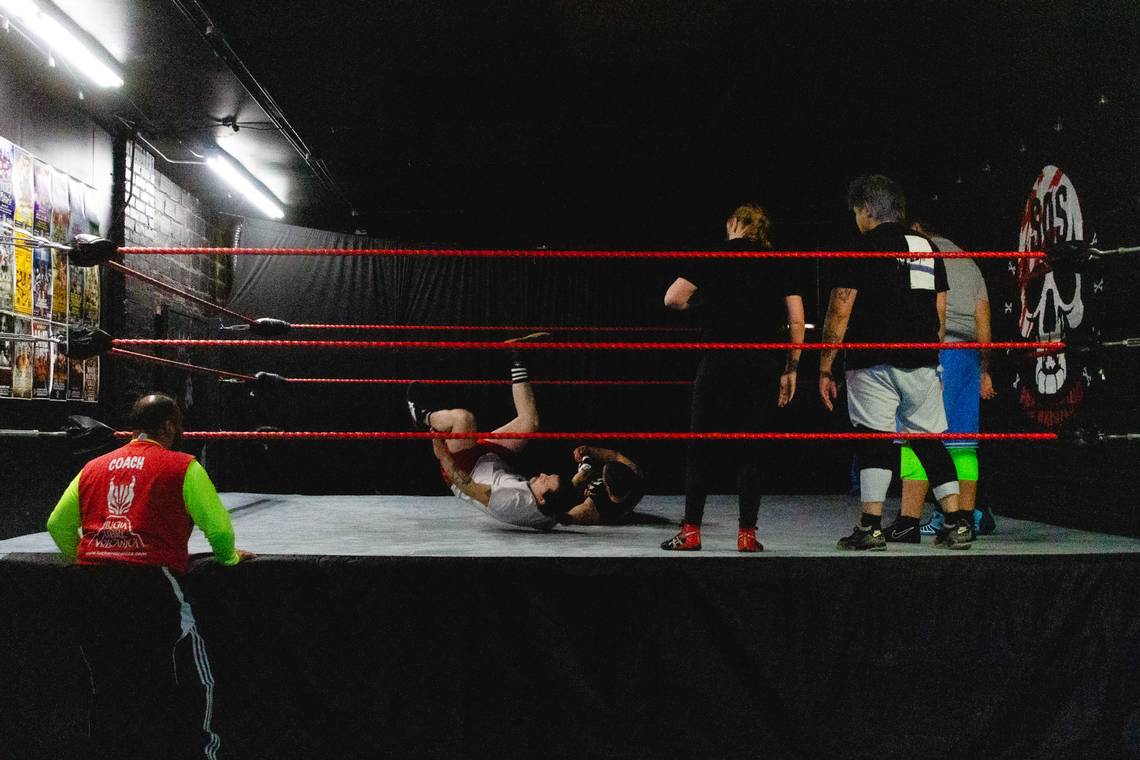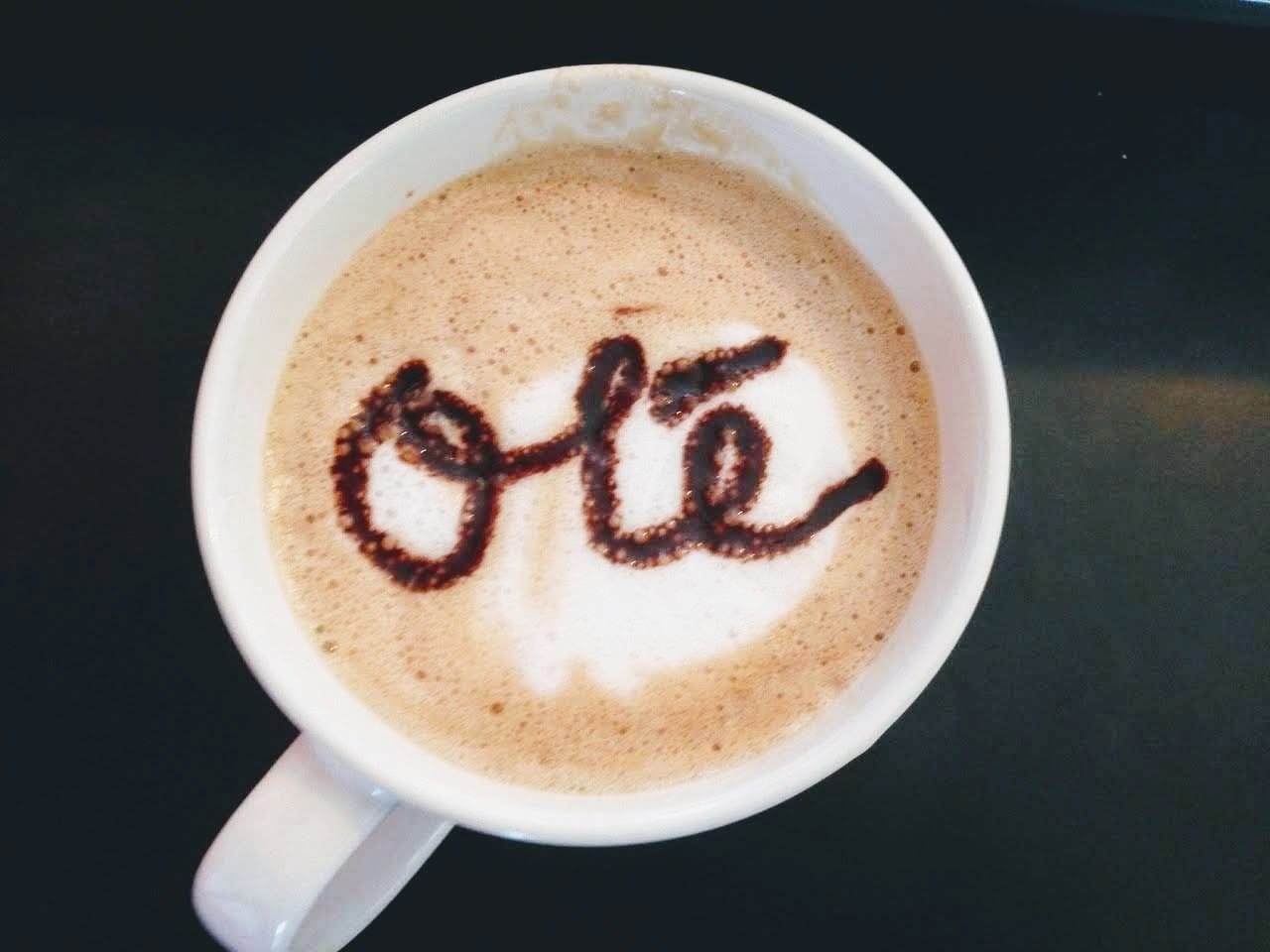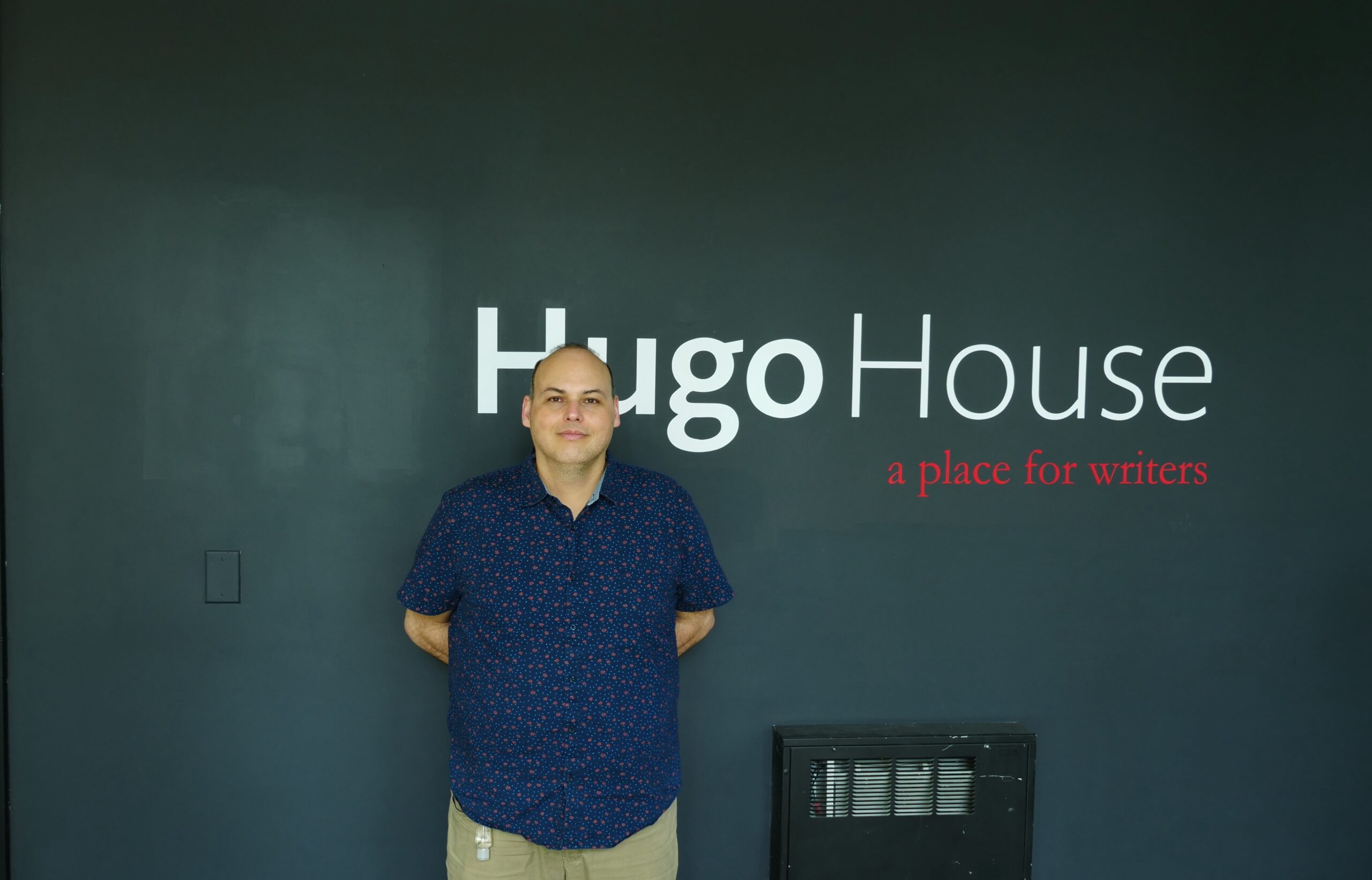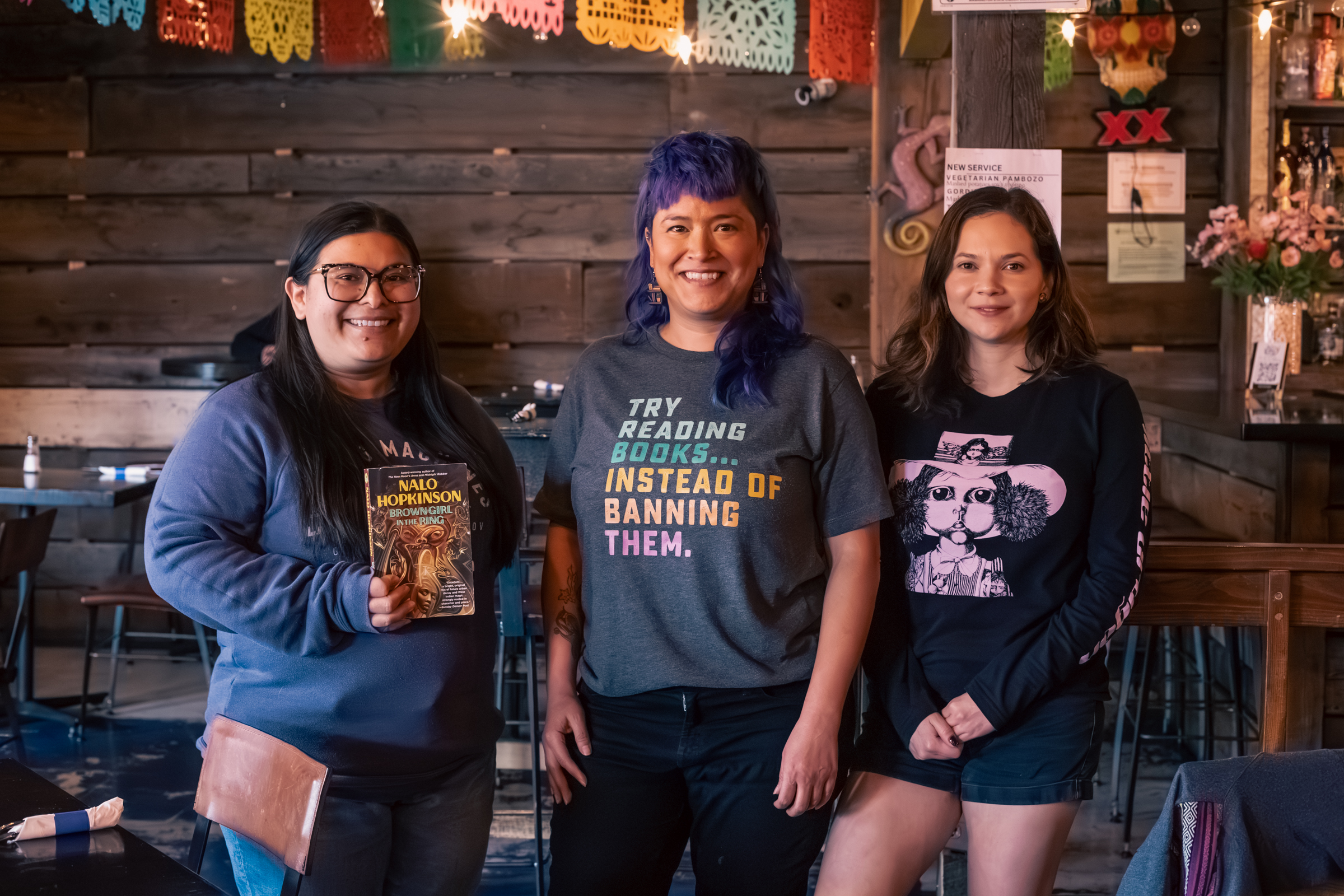Every Sunday, aspiring and pro-wrestlers train together at Lucha Libre Volcánica. The sounds of Spanish music and bodies hitting the wrestling ring can be heard at the only Lucha Libre school in the Pacific Northwest.
Owner José Luis Gómez has over 45 years of experience in Lucha Libre – or free fight – a Mexican style of wrestling. Gómez was born in Veracruz, Mexico, but grew up in Mexico City, where Lucha Libre originated 90 years ago and has since become a strong Mexican cultural symbol.
However, growing up, he didn’t watch Lucha Libre. He was first introduced to the sport when he was 15 years old. His cousin invited him to train with him, and since then, his love for Lucha Libre has grown. He became a professional luchador – or a Mexican wrestler – when he was 18 and competed in tournaments all over Mexico.
“Hay mucha Lucha Libre [en México]; en cualquier ciudad que vayas, siempre encontrarás un escenario para la Lucha Libre”, Gómez said in Spanish about how in whatever city in Mexico you go, you will always find an arena for Lucha Libre.
He moved to the United States 25 years ago. An opportunity to open up his own Lucha Libre school presented itself 15 years ago with the inspiration of the name Volcánica – or volcanic – coming from Mount Rainier, one of Washington’s most prominent landmarks and volcanoes. Since then, he has taught countless students and professional wrestlers and participated in various Lucha Libre events.
“At our first event, a lot of people cried because they said it had been a long time since they watched a Lucha Libre match,” Gómez said.
While Lucha Libre originated in Mexico, Lucha Libre Volcánica is not exclusive to just Mexican wrestlers, Gómez said. They welcome everyone of all races, ethnicities, and nationalities.
Lucha Libre Volcánica relocates to Tacoma
The Lucha Libre school was first located in Seattle, but during the pandemic, they had to cancel all their events, stop practicing, and their building was sold. They even lost one of their team members, The Joker.
They recently relocated to a new location in Tacoma at 5425 S. Tacoma Way, but have struggled to retain the wrestlers, many of whom are still afraid of COVID-19, Gómez said. Before COVID, they had around 40 people, including pro wrestlers and students. Currently, they have around 25 students and pro wrestlers.
Sigurd Cazador de Dragones, or Sigurd Slayer of Dragons, is a current wrestling student at Lucha Libre Volcánica who has asked to go by his wrestling name in order to keep his identity hidden. In Lucha Libre, wrestlers rarely reveal their identity to add to the spectacle of the sport and to maintain the illusion.
Sigurd said in an interview in Spanish that he joined the Lucha Libre school six months ago after deciding it was finally time to make his childhood dreams of becoming a professional luchador a reality.
Sigurd, who moved from Oaxaca, Mexico, and has lived in Seattle for the past five years, said he grew up watching Lucha Libre and looked up to the professional wrestlers on his TV.
“About 20 years ago, when I watched Mexican wrestling, which is the most common in Mexico, I watched wrestlers like Perro Aguayo, El Hijo del Santo, La Parka, and the Místico, and ever since I was a child, I formed this thought that I want to be like this person,” Sigurd said. “Unfortunately, sometimes you don’t have anyone to support you, and you have to follow your dreams on your own, but the most important thing is never giving up on your dreams, and if you want it, you will succeed, no matter how old you are, regardless of whether you’re 15 or 40, you’re going to make it.”
Since joining the school, Sigurd said he has had a good experience, is grateful for how welcoming and friendly the other wrestlers have been, and has grown to be fond of Gómez.
“The people who are professionals and have spent a much longer time than me in this area of wrestling are very friendly. They teach you practically everything, from the easiest basics to the most difficult ones that exist in that world,” Sigurd said. “It is a world that is very open, but most importantly, there is a lot of friendship between fellow wrestlers. It’s not like a job; I think it’s a second family that you form here.”
Although Sigurd has only been with the Lucha Libre Volcanica for six months, he said he is only a few months away from debuting as a professional Lucha Libre wrestler and is very excited to be one step closer to achieving his dream.

Kalico, an instructor and professional Lucha Libre wrestler teaching a student how to fall and roll forward. (Photo by Rosemary Montalvo)
American wrestling vs. Mexican wrestling
Lucha Libre differentiates itself from American wrestling by creating a spectacle for the audience through “good guy” and “bad guy” personas, extravagant masks and outfits, and airborne techniques, Gómez said.
There are two types of luchadores: the bad guys are called “rudos,” and the good guys are called “técnicos,” Gómez said. Rudos tend to be rowdy and harsher in their moves, while técnicos tend to use very formal combat styles. During training, a luchador identifies what character they want to personify based on the style of wrestling, an animal they want to represent, or a figure they want to embody.
The character they create then incorporates itself through the mask. This mask is rarely ever taken off during competitions and is what distinguishes American wrestling from Mexican wrestling. The mystery of who’s behind the mask further adds to the spectacle of the event, Gómez said. All the outfits are made in Mexico and cost around $1,000 each.
“American wrestlers talk too much,” Gómez said. “Mexican wrestling has more action in the ropes, and the wrestlers fly. It’s more of a spectacle.”

Training at Lucha Libre Volcánica
Every Sunday, students and professional wrestlers attend a 2-hours long strenuous practice.
During practice, they start by warming up and then continue on to learn different techniques and exercises, such as how to fall, climb the ring, and roll forward.
“I try to teach them how to take care and protect themselves because this sport looks easy, but it can be dangerous,” Gómez said.
Kalico, an instructor and professional Lucha Libre wrestler who has asked to go only by his wrestling name, has been with and represented Lucha Libre Volcánica throughout his eight-year professional career.
Kalico grew up outside New York City in Westchester County and said he has always loved professional wrestling. He remembers attending his first World Wrestling Entertainment (WWE) event.
“I was 8 years old when I saw my first pro wrestling event, WWE, at the Westchester County Center,” Kalico said. “I’ve just been into it forever, I had an older brother who was also into it and all of the kids at school were into it. This was the 80s, so I grew up watching Hulk Hogan, Macho Man, and Jimmy ‘Superfly’ Snooka were all the guys who I grew up with as heroes.”
Growing up, Kalico was always an athletic kid who played team sports. However, he preferred lifting weights and practicing martial arts, which he continued into adulthood.
Kalico moved to Seattle in the 1990s, where he began training kung fu before his friend told him about an independent wrestling show there.
“I had never heard of independent wrestling in Seattle, so I was really excited and we were going to be at El Corazon for the event called Project 42, and that was the first independent wrestling that I’d seen in Seattle, and it just lit me up,” Kalico said.
Kalico had already been looking to begin training with a powerlifting gym, but after attending this event, he began searching for ways to get involved with Seattle’s wrestling scene. Kalico said he found Lucha Libre Volcánica and reached out to Gómez, who welcomed him to begin training.
“I went to my first training and just never turned back. I loved it. I loved the physicality of it,” Kalico said. All the people that I met—well, not all the people, but a lot of the people I met—I got along with great. Once I started, I just couldn’t stop. I just wanted to learn everything I could.”
Many of the luchadores at Lucha Libre Volcánica work full-time jobs in addition to being pro-wrestlers.
“Everyone has their jobs,” Gómez said. “Here, you’re not going to become rich; you’re not going to earn much money. But it’s a sport that gets in your blood, and you enjoy it.”
It typically takes a student between seven months to two years for a student to participate in their first match, depending on how much dedication and effort they put in, Gómez said.
They travel to many areas across the U.S. for tournaments. They have eight events lined up for the rest of the year, averaging around one event per month.
His motivation to continue pursuing his Lucha Libre school comes from his students and wrestlers. Seeing them succeed motivates him to continue teaching. In the future, he hopes to continue growing the family of luchadores and gaining more students.
“Lucha Libre is part of the Mexican culture we brought here,” Gómez said. “Thanks to god, he gave us the opportunity to open a school here. We are the only Lucha Libre school in the Northwest, and it’s an honor for me to be the pioneer of bringing Lucha Libre to Washington state.”
Cover Photo: Lucha Libre Volcanica students practice stunts during their class at a small gym in Tacoma on Sunday, May 5. Rosemary Montalvo rmontalvo@thenewstribune.com
Jacquelyn Jimenez Romero, a final-year student at the University of Washington, is the Hortencia Zavala Foundation Spring intern. Jacquelyn is working with Washington Latino News and The News Tribune.

Publisher’s Notes: This article was produced in collaboration with The News Tribune.




